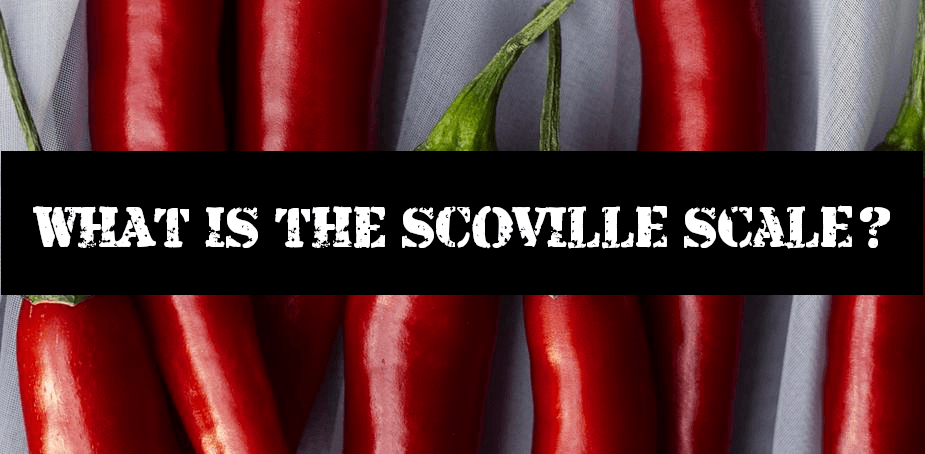I am sure a majority of you are generally familiar with the basics of the scoville scale. The higher on the scale the hotter the chili. It's as simple as that right?
Well yes….and no.
The formal definition is; The Scoville scale is a measurement of the pungency (spiciness or "heat") of chili peppers and other spicy foods, as recorded in Scoville Heat Units (SHU) based on the concentration of capsaicinoids, among whichcapsaicin is the predominant component. As with most things discovered by humans they had to stroke their ego a little bit and name it after themselves. The scale is named after its maker, American pharmacist Wilbur Scoville. His method’s official name is the Scoville organoleptic test. The scoville organoleptic test has since been superseded by the high-performance liquid chromatography (HPLC) test; which is analytically based rather than subjective.
The madness behind the method
To understand why we are moving away from the scoville organoleptic test we first have to understand how it works / what is done. The process starts with an exact weight of dried pepper dissolved in alcohol to extract the heat components, then diluted in a solution of sugar water. From there the peppers are given to a panel of 5 five trained tasters in decreasing concentration of the extracting capsaicinoids (heat components) until 3 of the 5 tasters can no longer detect heat in a dilution. The heat level is based on this dilution rated in multiples of 100 SHU. Starting to see why this is going out of favor?
The test can be extremely imprecise due to human subjectivity. Each tasters palate and number of mouth heat receptors, vary widely among people. Another problem is the sensory fatigue; which translates over to individuals being quickly desensitized to capsaicinoid after tasting a few samples within a short period. That is usually what shows where you are tasting multiple hot sauces starting at mild to hot the hot doesn't feel that bad as its building off the maximum of the last sauce rather than starting from 0. This method produced results varying up to +-50 between laboratories.
New and improved
As the name implies, the high-performance liquid chromatography (HPLC) is the superior test comparatively to the scoville organoleptic test due to its quantitative nature. The results of the test come out on a pungency scale rather than a scoville unit but can be easily converted by multiplying the part-per-million by 16. For example, an orally administered capsule of capsaicinoid claiming 100,000 scoville units (think low end habaneros) will correspond to around 6.6 mg of capsaicinoids.
The levels of pungency, in terms of Scoville units are:
|
Pungency |
SHU |
|
Very highly pungent |
Above 80,000 |
|
Highly pungent |
25,000 to 70,000 |
|
Moderately pungent |
3,000 to 25,000 |
|
Mildly pungent |
700 to 3,000 |
|
Non pungent |
0 to 700 |
The caveat
Keep in mind since scoville ratings are defined per unit of dry mass, comparison of rating between products having different water content can be misleading. For example, typical fresh chili peppers have a water content around 90%, whereas some sauces can have a water content of 95% (those are the ones you don't buy). Even law-enforcement-grade pepper spray, values from 500,000 up to 5 million SHU; it largely depends on the dilution of the spray.
The HPLC method is not perfect either as there are ranges of scoville unit ratings based upon several factors.
Why are there ranges on certain peppers?
Nothing like eating a housing down some nachos are your favorite pub and the first few bites with jalapeno peppers don’t do anything then the next bite it kicks your ass. What gives?
The numerical differences between the same type of peppers derives from some of the following conditions:
- Seed lineage
- Climate
- Humidity
- Soil composition supply nutrients
Each of these plays an important role in the overall heat level of the pepper.
Conclusion
If you want to learn more information about the wide world of chili peppers and all things spicy make sure to check out our other blog posts.
Sources
-
Twilight Greenaway (10 January 2013)."How Hot is That Pepper? How Scientists Measure Spiciness". Smithsonian.com, US Smithsonian Institution. Retrieved 17 December 2017
-
Guzmán, I; Bosland, P. W (2017). "Sensory properties of chili pepper heat - and its importance to food quality and cultural preference".Appetite.117: 186–190.doi:10.1016/j.appet.2017.06.026.PMID 28662907.
-
Collins MD, Wasmund LM, Bosland PW (1995)."Improved method for quantifying capsaicinoids inCapsicum using high-performance liquid chromatography".HortScience.30 (1): 137–139.
-
Peter, KV, ed. (2001),Handbook of Herbs and Spices,1, CRC Press, p. 120,ISBN 978-0-8493-1217-5
-
Scoville, Wilbur (May 1912)."Note on Capsicums".Journal of the American Pharmaceutical Association.1 (5): 453–454.doi:10.1002/jps.3080010520
-
Othman, Zeid Abdullah (2011)."Determination of Capsaicin and Dihydrocapsaicin in Capsicum Fruit Samples using High Performance Liquid Chromatography"
-
Peter, K. V. (2012).Handbook of Herbs and Spices. Elsevier Science. p. 127.ISBN 978-0-85709-5671.
-
Tainter, Donna R.; Anthony T. Grenis (2001).Spices and Seasonings. Wiley-IEEE. p. 30.ISBN 978-0-471-35575-5. Interlab variation [for the original Scoville scale] could be as high as +/−50%. However, labs that run these procedures could generate reasonably repeatable results.”
-
USDA nutrient database forPeppers, jalapeño, raw (92% water content);Peppers, hot chile, red, raw (88% water content)




